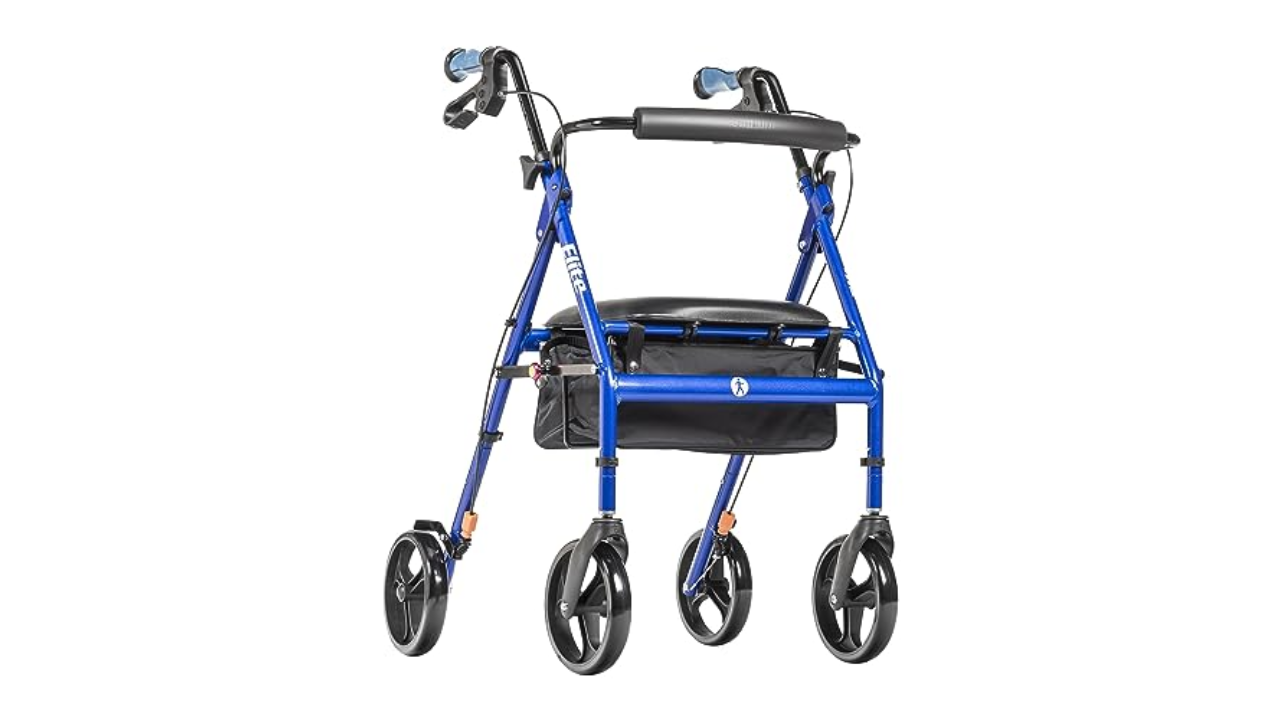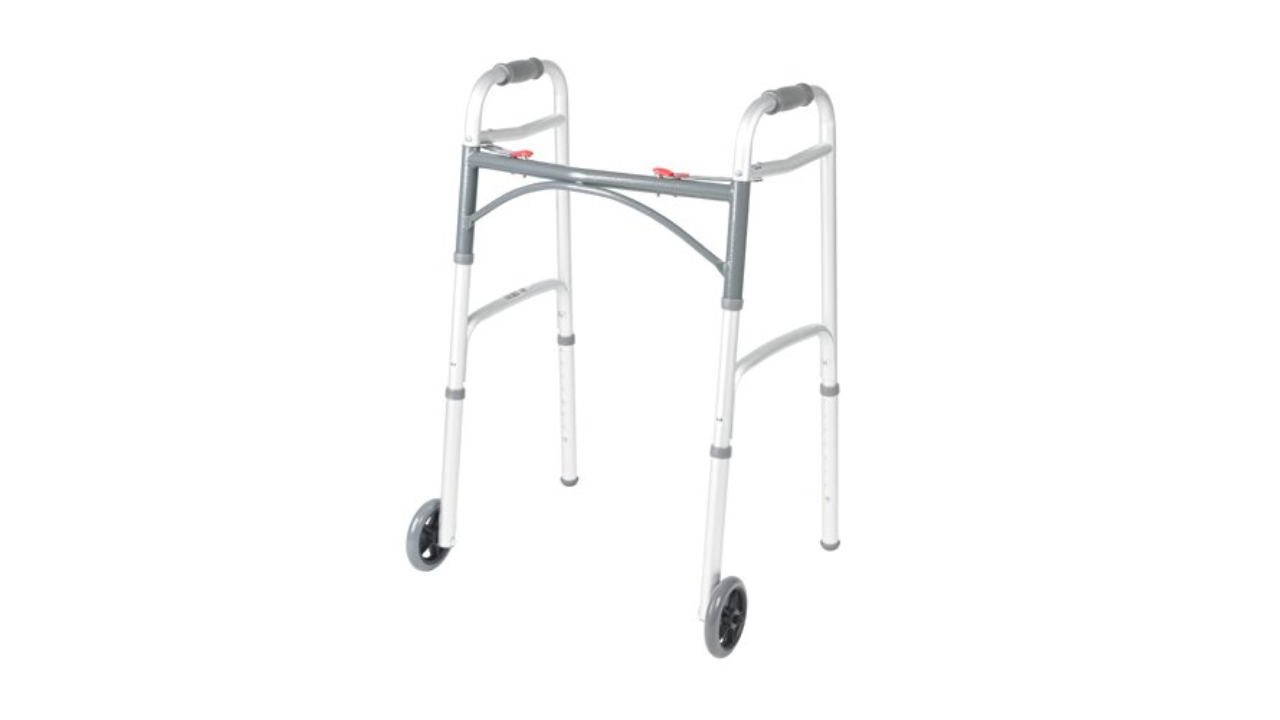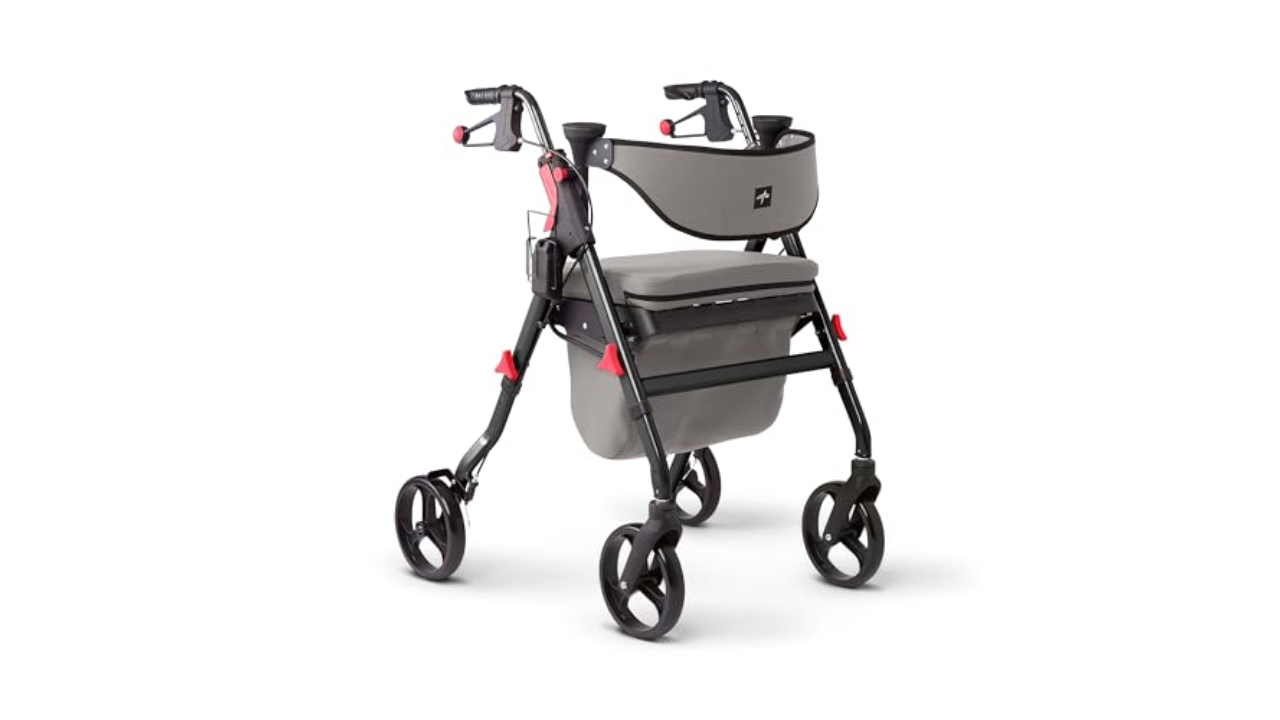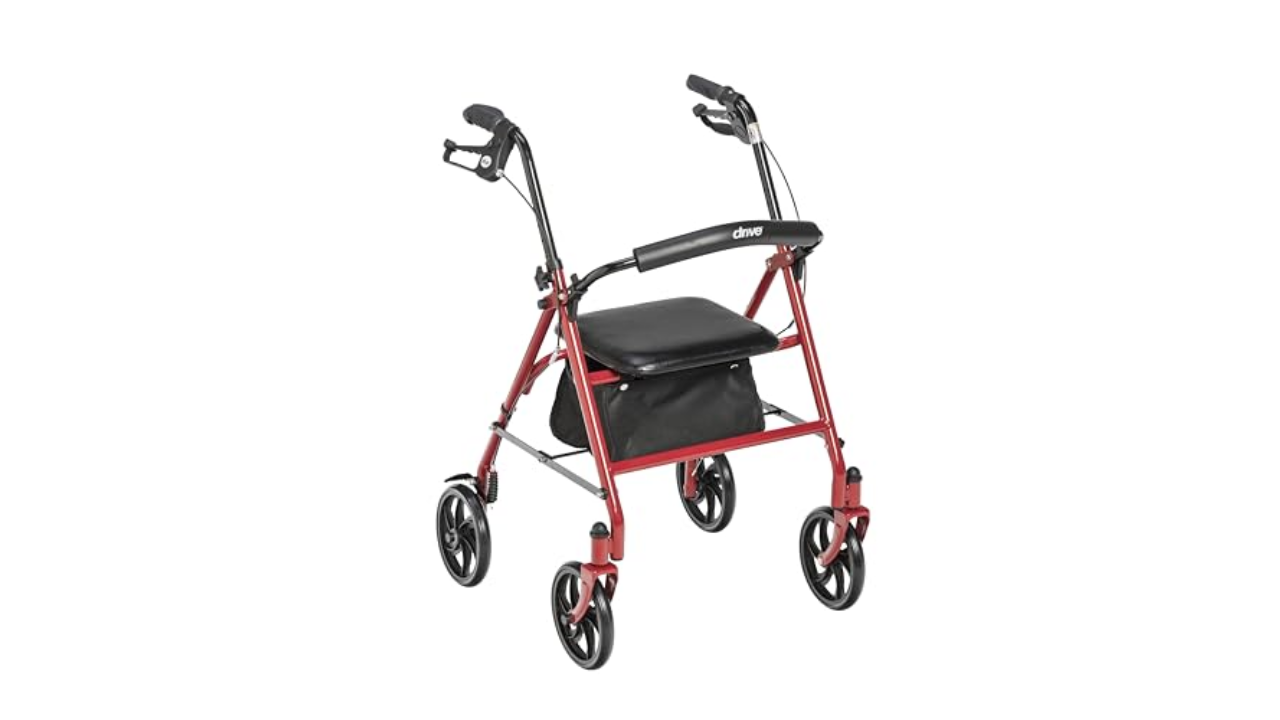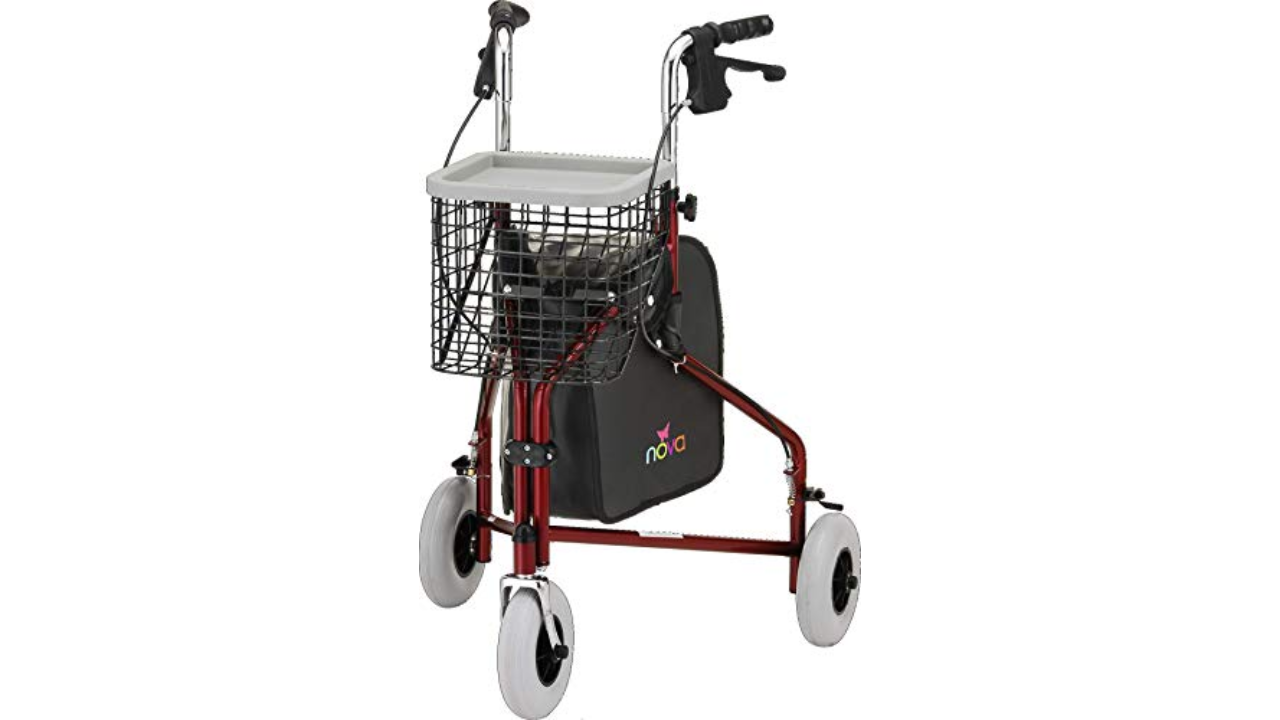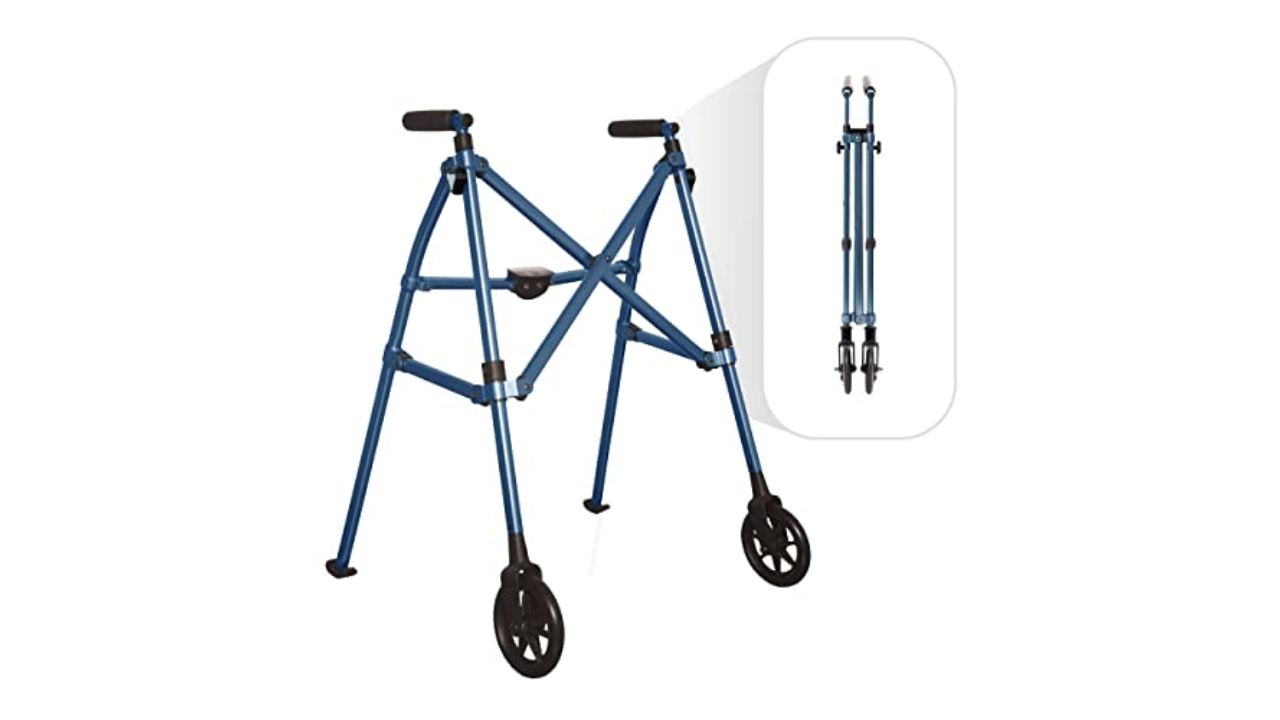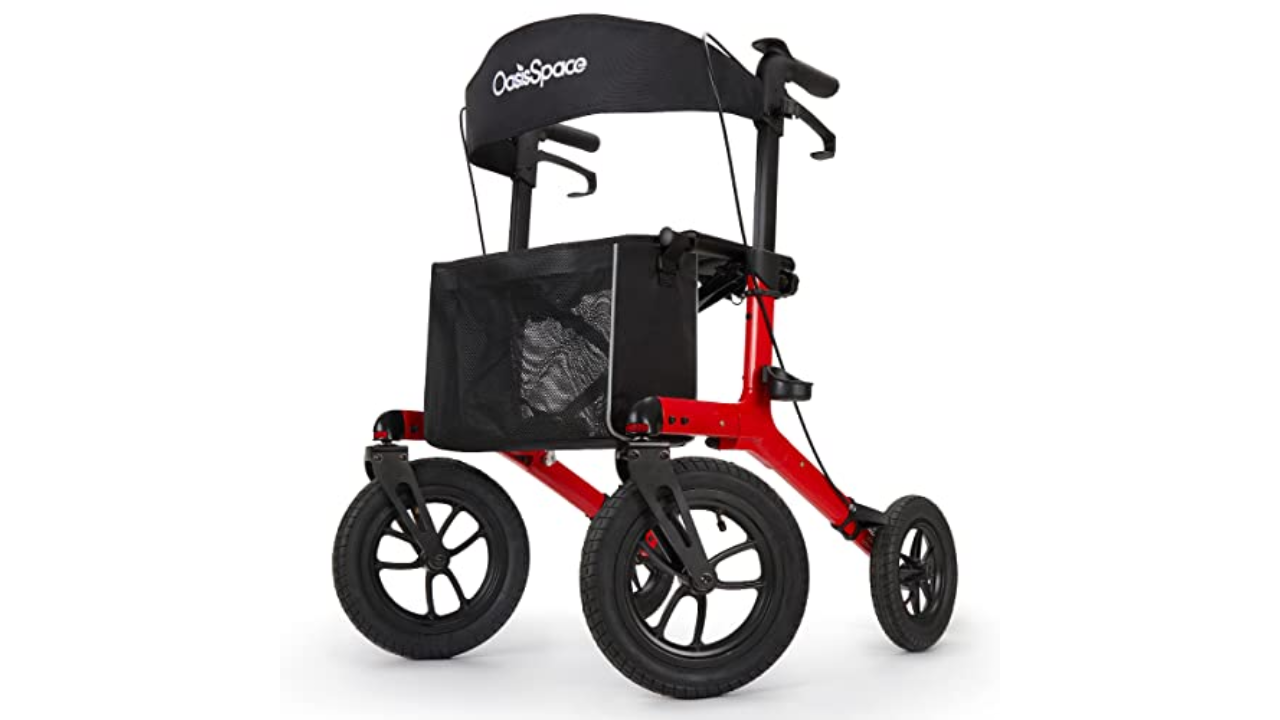We independently evaluate the products we review. When you buy via links on our site, we may receive compensation. Read more about how we vet products and deals.
The best walker for seniors of 2024 according to therapists, nurses and other health care professionals
Stay active with the best walkers to support your adventures including rollators and other wheeled walkers from brands like Drive Medical and Nova.
Mobility problems affect millions of people worldwide, especially seniors. Data from the Centers for Disease Control and Prevention (CDC) estimates that more than 12% of Americans have a severe mobility disability that significantly affects walking or climbing stairs, and many more people have less severe mobility issues that interfere with daily activities.
Drive Medical Hugo Elite Rollator Walker
Best walker overall
Drive Medical 10210-1 2-Button Folding Walker
Best budget walker
Medline Premium Empower Rollator Walker
Best walker with wheels
Drive Medical 10257RD-1 4-Wheel Rollator Walker
Best walker with seat
Nova Traveler 3-Wheel Rollator Walker
Best foldable walker
Able Life Space Saver Walker
Best lightweight walker
OasisSpace Rollator Walker with Pneumatic Tires
Best all-terrain walker
Conditions like arthritis and osteoporosis, as well as injuries from falls, can make it difficult to get around without assistance. And getting older in general can lead to declining balance and stability.
David Chandler, vice president of clinical services and business development at Senior Helpers, says, “It’s important to recognize and pay attention to the signs that indicate when a walker might be beneficial.” Walkers can give you a sense of security and independence, reduce the risk of falls and help you stay physically active.
According to Chandler, some warning signs that demonstrate the need for a walker include difficulty standing up, unsteadiness, increased fatigue, difficulty performing simple tasks like getting dressed and recent falls or near falls. If you or a loved one are experiencing any of these signs, it may be time to consider a walker for added support and stability.
To better understand the different types of walkers and their benefits, we spoke with multiple medical professionals, including physical therapists and senior care experts, to learn more about their recommendations for the best walkers for seniors and other individuals with mobility challenges. We used these insights and hours of research to compile a list of the top walkers for seniors in 2024.
Cost: $158 | Weight capacity: 300 lbs | Height: Adjustable | Type of walker: Rollator | Brakes: Yes | Extra features: Storage seat, backrest, storage bag, foldable, swivel wheels, brake lock
The nearly 3,500 five-star Amazon reviews don’t lie. This walker has a bit of everything: a padded seat and backrest, storage space and a reliable braking system to protect you from falls. Plus, its foldable design caters to an active lifestyle. You can quickly collapse and store it in your car when you’re on the go.
At 18 pounds, it’s not the lightest option on this list, but it’s still manageable for most. It also boasts an impressive weight capacity of 300 pounds with adjustable handlebars to accommodate heights up to 6'2".
"As a big, tall woman, I was concerned the seat would be too narrow for comfort. That was my biggest concern, now alleviated," wrote one Amazon reviewer. Other positive buyer feedback includes how easy it is to assemble and maneuver, as well as how much it has improved their mobility and independence.
- Foldable
- Padded seat
- Large storage compartment
- Heavier than other options
- May be difficult to fit in smaller spaces
Cost: $40 | Weight capacity: 350 lbs | Height: Adjustable | Type of walker: Two-wheeled | Brakes: No | Extra features: Aluminum frame, contoured hand grips, rear glide caps, push-button folding
While this easy-folding, easy-stowing walker doesn’t come with an array of extra features, its simplicity and functionality stand out — especially for budget-conscious buyers. With a weight capacity of 350 pounds, this model surpasses many higher-end options.
The two-button folding mechanism is straightforward, and the walker’s design makes it easy to maneuver and pivot. That said, those with limited hand strength may have trouble with the push-button folding feature.
Although it lacks a storage compartment, its practicality and durability make it a perfect choice for those needing a reliable yet economical mobility aid. Amazon reviewers give this walker high marks, with nearly 90% of ratings at or above four stars.
- Lightweight
- Easy to maneuver
- Handles multiple terrain types
- No storage compartment
- Push button may be difficult for those with limited hand strength
Cost: $210 | Weight capacity: 300 lbs | Height: Adjustable | Type of walker: Rollator | Brakes: Yes | Extra features: Adjustable handles, adjustable memory foam seat, backrest, cupholder, storage
The name says it all. The Medline Premium Empower Rollator Walker truly empowers you to get out and about with ease. Medline has been around for nearly 60 years and has a reputation for producing quality medical supplies. We’re not surprised by this model’s high satisfaction rates — 86% of Amazon buyers rate it at least four out of five stars.
This walker has all the bells and whistles, from its adjustable memory foam seat to its large storage bag and cup holder. The supportive backrest provides additional comfort when you need a moment to rest. Since the wheels are larger than a standard walker, you’ll easily navigate through rough terrains, like uneven sidewalks and gravel.
While some reviewers note it can be a bit heavy to lift into a trunk, its sturdy construction and adjustable features make it worth considering. Assembly may be a bit tricky, however, if you’re not particularly handy.
- Large storage bag and cup holder
- Adjustable handles and backrest
- Folds flat for storage
- Some say it's difficult to assemble
- May be too heavy for some
Cost: $67 | Weight capacity: 300 lbs | Height: Adjustable | Type of walker: Rollator | Brakes: Yes | Extra features: Removable back support, padded seat, adjustable handles, under-seat storage pouch
This rollator-style walker is an Amazon bestseller with over 35,000 five-star ratings. As if that wasn’t enough to convince you, it’s also priced much lower than comparable walkers with similar features.
We love this option’s steel frame, which gives it superior durability. It also folds to save space in the car. The removable back support, padded seat and adjustable handles make it one of our top picks.
"Assembly is a breeze," said one Amazon reviewer. "Seriously, this is the best price for any such rollator walker anywhere. I used it for the first time last week, and having it is a big help." Other reviewers noted the quality of construction and ease of use. However, some felt the seat wasn’t quite wide enough for their liking.
- Foldable
- Easy to maneuver
- Limited assembly required
- Affordable
- Seat not wide enough for some
- Can't access storage while sitting
Cost: $180 | Weight capacity: 250 lbs | Height: Adjustable | Type of walker: Rollator | Brakes: Yes | Extra features: Foldable, large zippered storage pouch, storage basket, basket tray, slip-proof hand grips
You’ll be hard-pressed to find a better foldable walker than this rollator. While four-wheeled walkers are great for mobility, they can be a bit bulky and difficult to transport. This three-wheeled option gives you the convenience of a foldable walker without sacrificing the maneuverability of a rollator.
The large zippered storage pouch and wire basket with tray give you plenty of room to keep your belongings nearby. The hand grips are slip-proof, and the locking brakes provide added safety when standing in place. As a bonus, this walker folds with the storage bag in place and stands upright on its own.
Customers rave about the Nova Traveler’s durability and ease of use, noting that it’s ideal for travel. "I use my Traveler everywhere I go," one five-star Amazon reviewer said. "The larger wheels are a big help in getting over thresholds, uneven sidewalks and grassy areas." More than 90% of reviewers agree, giving it four or five stars.
- All-terrain wheels
- Stands upright when folded
- Comes fully assembled
- No seat
- Only suitable for users up to 250 lbs
Cost: $96 | Weight capacity: 400 lbs | Height: Adjustable | Type of walker: Two-wheeled | Brakes: No | Extra features: Foldable, self-standing, padded handles, multiple color options
According to the manufacturer, this space-saving option folds four times smaller than the average walker. It weighs only 8 pounds yet can support a body weight of up to 400 pounds (the highest weight capacity on our list). While it’s not a traditional rollator, it has two front wheels to make it easier to maneuver.
Since it’s so compact and light, you can easily transport it in your car, take it on trips or store it just about anywhere. We love that it comes fully assembled to save your fingers and sanity.
"Folding and unfolding it is a snap," says one five-star Amazon reviewer. "It’s very easy to make it narrower when going through a narrow space." The compact design makes it perfect for those living in smaller apartments or with limited storage space. While it has no built-in storage compartment, you can purchase accessories like a cup holder, basket or trolley tray.
- Compact
- Comes fully assembled
- Accessories can be purchased separately
- No storage compartment
- Fixed wheel design may not be as maneuverable
Cost: $190 | Weight capacity: 300 lbs | Height: Adjustable | Type of walker: Rollator | Brakes: Yes | Extra features: Foldable, padded seat, backrest, adjustable handles, brake lock
Gravel, stone, grass, dirt — you name it, this walker is your all-terrain companion. The OasisSpace Rollator Walker features large pneumatic wheels that can easily tackle any surface. The sturdy frame can support up to 300 pounds, and the handles offer five inches of adjustment to fit a range of heights.
It’s built for all-terrain use and folds easily for running errands or day-to-day activities. There’s also a padded seat, supportive backrest and a hand brake lock for peace of mind.
One Amazon reviewer says, "The walker pushes light, does not vibrate and gives you a comfortable seat to rest on." Other customers appreciate the ability to make the walker narrower to fit through doorways, making it more convenient for indoor use as well. However, some users may find it too bulky due to its large wheels.
- Sturdy
- Smooth handling on all terrains
- Can be made narrower to fit through doorways
- Large wheels may be bulky for some users
Types of walkers
Depending on your needs, there are several types of walkers to choose from. Here are the most common types and their benefits:
Standard walker: This is the most basic and traditional type of walker. It has four legs with rubber caps to provide stability and support while walking. You must lift the walker with each step since it doesn’t have wheels.
Two-wheeled walker: Similar to a standard walker, a two-wheeled walker has two front wheels for easier maneuverability. It’s best if you can partially support your weight and have good balance.
Three-wheeled walker: As the name suggests, this type has two back wheels and one front wheel. It’s often narrower for maneuvering tight spaces but may not be as stable as four-wheeled options.
Rollator: Considered the most advanced type of walker, a rollator has four wheels and usually includes a seat, backrest and hand brakes. It makes it easier to move around without needing to lift the walker. However, Chandler says, "Walkers with wheels can roll unexpectedly, making it harder to control and they might get stuck on things like cracks or rugs, which could cause a trip and fall." He advises only using a rollator after having proper training and being comfortable with its use.
Knee walker: Also known as a knee scooter, this device has a padded platform to rest an injured or recovering leg. It’s designed for conditions that prevent you from using one of your legs, such as a broken ankle or foot.
Hemi walker: Designed for people with limited mobility on one side of the body, this style of walker has a wider base on one side to provide more stability while walking.
Factors to consider when making a purchase of a walker
Stability and balance
It’s crucial to choose a walker that provides stability and balance while walking. If you have pretty good balance, a two or three-wheeled walker may be exactly what you need. However, if you need more support or have trouble with balance, a standard walker without wheels or a rollator (with proper training) may be better.
Standard walkers don’t have wheels, so they require you to lift and move the walker with each step. While this may provide more stability, it can be tiring and difficult for some.
On the other hand, rollators have four wheels and require less upper body strength, making them ideal for those with balance issues or limited strength. They also usually have a seat and backrest, so you can rest when you feel fatigued. The hand brake locks also provide an extra layer of stability when navigating inclines or declines.
"Wheels are easier to maneuver, but a walker without wheels offers more stability," says Devin Trachman, clinic director at Physical Therapy Central. Trachman advises giving thought to your balance and strength needs before purchasing.
"The best way to know whether a walker will offer you the stability and support you need is to try it out — give it a trial walk and see how it feels," she says. It's also important to read the reviews and recommendations on walkers based on users with similar mobility limitations. "Often, feedback from others can provide significant insight or point you in the right direction."
Weight capacity
The amount of weight each walker can support differs based on design and construction. Generally, a standard walker can support 250 to 350 pounds, while some rollators can hold up to 500 pounds. Trachman says that it’s essential to double-check the weight capacity before purchasing and consider any items you plan to transport with the walker, such as a bag or oxygen tank.
"It’s important not to exceed the weight limit of a walker as it can compromise the structural integrity of the walker, increasing the risk of accidents or injuries," she says.
If you need something with a higher weight capacity, a few options support up to 800 pounds. Talk to your health care provider or a physical therapist to determine the best weight capacity for your needs.
Height adjustability
Not all walkers are created equal. Some have fixed heights, meaning you can’t adjust them to fit your body. A poorly fitted walker can lead to neck and back pain and may even increase your risk of falls.
"The height adjustment of a walker affects its use and effectiveness by helping the user achieve proper body alignment, walk with optimal form, increase safety and stability and use energy efficiently," says Trachman.
Models with adjustable handles usually have buttons or pins you press to slide the handles up or down. Read the manufacturer’s guidelines to learn how to properly adjust the walker for your height.
Foldability and portability
If you plan to use your walker at home and outside, consider purchasing a model that folds easily for storage and transport. Standard walkers are smaller than rollators and don’t have wheels to fold, so they are easier to store and transport. However, many rollators also fold up easily.
Also, consider the weight of each model if you aim to transport it frequently. A lighter option weighing less than 10 pounds, like the Able Life Space Saver Roller Walker, may be best if you need something highly portable. Rollators have larger dimensions and usually weigh more, often up to 20 pounds. If you have the physical strength or assistance to lift and transport a heavier walker, this may not be an issue for you.
Braking system
Most rollators come equipped with hand brakes to help you slow down or stop when needed. Standard walkers without wheels do not have braking systems, so you’ll need to lift and move the walker with each step. Some rollators also have a parking brake for an extra layer of protection when sitting or standing in place.
"Brakes are particularly important for people who rely on their walkers for balance and support," says Christopher Norman, a geriatric nurse practitioner with the National Council on Aging. "Brakes help control the walker on slopes or uneven ground and can lock the walker in place when needed, like when stopping to rest or sit."
When considering braking options, keep in mind your hand strength and dexterity. If you have limited hand function, look for models that offer easier-to-use brakes or allow for adjustments to accommodate your needs.
Price and budget
The cost of walkers ranges from about $30 to over $500, depending on the brand, features and accessories. High-end rollators with advanced features or bariatric models with higher weight capacities cost more than standard, no-frill models. Consider your budget and what features are most important to you when making a purchase. Remember to factor in any additional accessories or attachments that may be useful for your needs, such as extra storage or a cup holder.
How we chose the best walkers
To find the best walkers, we analyzed customer reviews and feedback. Understanding the experiences and opinions of real users provides an invaluable perspective on each walker’s overall quality and effectiveness. We carefully considered both positive and negative reviews to get a well-rounded view of each product. We also paid close attention to comments about durability, ease of use and stability.
We consulted with physical therapists, geriatricians and other health care professionals specializing in mobility aids. Their expertise helped us narrow the list of walkers by focusing on critical aspects such as ergonomics, safety features and suitability for different mobility levels and strengths. Their insights also helped us understand each product’s potential benefits and limitations.
After hours of reviewing and assessing some of the most popular models and pulling together expert opinions and customer feedback to create a list of the best walkers on the market, we narrowed down our list of the best walkers for seniors based on their features, performance and overall value.
FAQs
What are the benefits of using a walker?
"Walkers benefit those with mobility issues by providing support and stability, reducing the risk of falls," explains Brittany Ferri, an occupational therapist with the National Council on Aging.
"They allow those who cannot walk without help to be more independent and safe, and they promote a more upright walking posture — as long as they are adjusted correctly," says Ferri. This helps alleviate strain on the back and legs commonly caused by poor walking posture.
How do I adjust a walker to the right height?
"Using the wrong height can lead to poor posture and strain on the body, especially on the back and arms," says Norman, who explains that a health care professional can help you determine the best height for your walker. "A good rule of thumb is that when you’re standing as straight as you can with your arms outstretched and hands on the walker, there should be a slight bend in your elbows," says Norman. "This will help you gauge how close or far to stand when using your walker."
Can a walker be used on stairs?
Most experts recommend against using a walker on stairs, as it increases the risk of falls. Some walkers are more cumbersome to maneuver, adding to the danger. A cane or stair lift may be safer if you have stairs in your home.
What is the difference between a walker and a rollator?
A walker is typically a lightweight frame with four legs and no wheels. Its design requires you to lift and place the walker in front of you with each step. On the other hand, a rollator has four wheels that move without lifting or dragging the frame. It also has handlebars with hand brakes for added stability and control when walking. Rollators are often easier to maneuver but have more safety concerns than standard walkers.
Are walkers covered by insurance, Medicare or Medicaid?
Every insurance plan is different. Many plans, including Medicare and Medicaid, cover the cost of a walker if your doctor deems it medically necessary. However, in some cases, your plan may only cover the rental of a walker, not the outright purchase. Private insurance may also have specific criteria for coverage, such as requiring a prescription or a specific medical condition. If you’re in the market for a walker, call your insurance company or Medicare/Medicaid to learn more about your coverage options and requirements.
Meet our experts
Devin Trachman, clinic director at Physical Therapy Central
David Chandler, vice president of Clinical Services and Business Development at Senior Helpers
Brittany Ferri, an occupational therapist with the National Council on Aging
Christopher Norman, a geriatric nurse practitioner with the National Council on Aging








